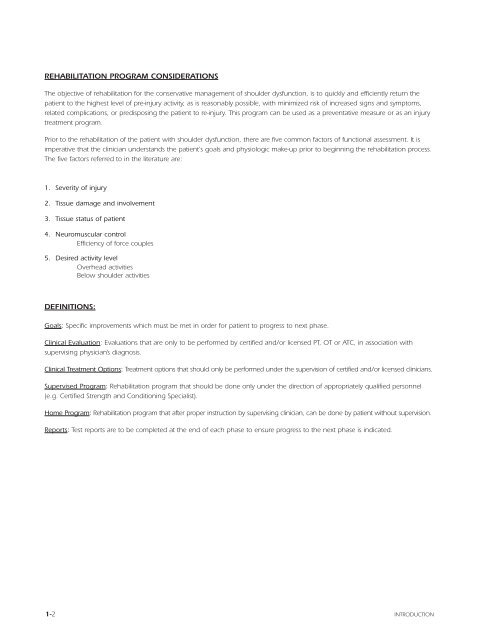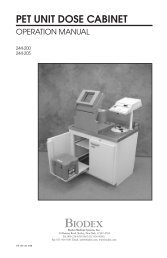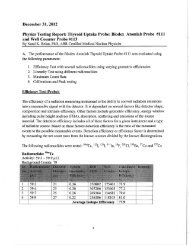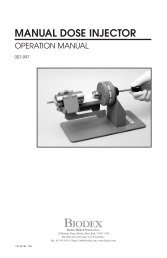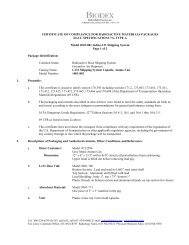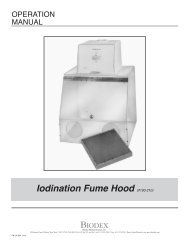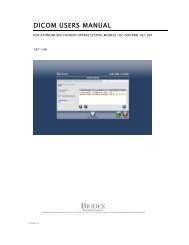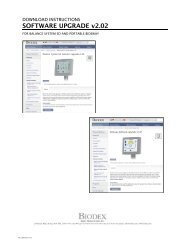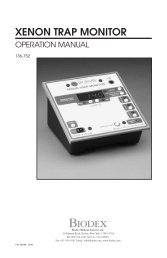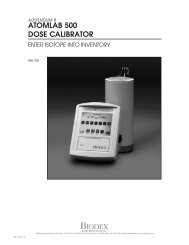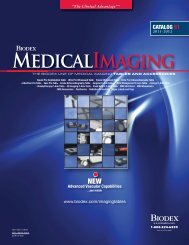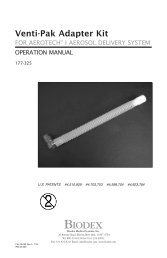Shoulder Dysfunction - Biodex
Shoulder Dysfunction - Biodex
Shoulder Dysfunction - Biodex
You also want an ePaper? Increase the reach of your titles
YUMPU automatically turns print PDFs into web optimized ePapers that Google loves.
REHABILITATION PROGRAM CONSIDERATIONS<br />
The objective of rehabilitation for the conservative management of shoulder dysfunction, is to quickly and efficiently return the<br />
patient to the highest level of pre-injury activity, as is reasonably possible, with minimized risk of increased signs and symptoms,<br />
related complications, or predisposing the patient to re-injury. This program can be used as a preventative measure or as an injury<br />
treatment program.<br />
Prior to the rehabilitation of the patient with shoulder dysfunction, there are five common factors of functional assessment. It is<br />
imperative that the clinician understands the patient's goals and physiologic make-up prior to beginning the rehabilitation process.<br />
The five factors referred to in the literature are:<br />
1. Severity of injury<br />
2. Tissue damage and involvement<br />
3. Tissue status of patient<br />
4. Neuromuscular control<br />
Efficiency of force couples<br />
5. Desired activity level<br />
Overhead activities<br />
Below shoulder activities<br />
DEFINITIONS:<br />
Goals: Specific improvements which must be met in order for patient to progress to next phase.<br />
Clinical Evaluation: Evaluations that are only to be performed by certified and/or licensed PT, OT or ATC, in association with<br />
supervising physician’s diagnosis.<br />
Clinical Treatment Options: Treatment options that should only be performed under the supervision of certified and/or licensed clinicians.<br />
Supervised Program: Rehabilitation program that should be done only under the direction of appropriately qualified personnel<br />
(e.g. Certified Strength and Conditioning Specialist).<br />
Home Program: Rehabilitation program that after proper instruction by supervising clinician, can be done by patient without supervision.<br />
Reports: Test reports are to be completed at the end of each phase to ensure progress to the next phase is indicated.<br />
1-2 INTRODUCTION


